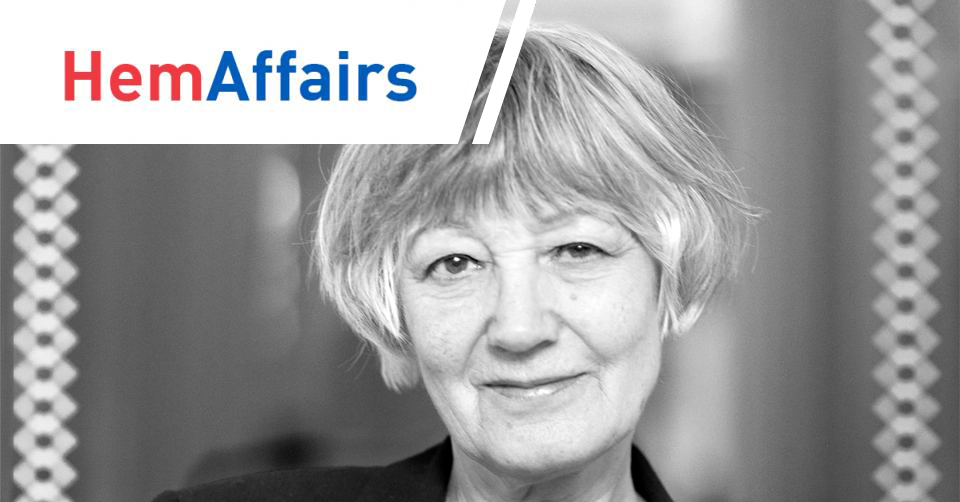The past and future of the EU Blood, Tissues and Cells legislation

Photo credit: Ineke Oostveen
Blood, tissues and cells (BTC) are used in medicine and in hematology on a daily basis. EU legislation has been in place for over 15 years to regulate those practices, and to ensure safety and quality standards for substances of human origin (SoHO). For instance, through technical and traceability requirements for BTC, the reporting of serious adverse reactions (SARs), and verification procedures for imported BTC.
In its recent evaluation report, the European Commission concludes that the BTC Directives have been effective in enhancing safety. Nonetheless, there is room for improvement on quality standards and efficacy. As stakeholders gathered around the Commission to review the challenges and solutions on October 28, 2019[1], EHA zoomed in on the views of hematologists with Prof. Anneke Brand, Professor Emeritus of Transfusion Medicine of the Leiden University (The Netherlands).
The EU Blood, and the Tissues and Cells Directives have been in place since 2002 and 2004, respectively. Why do we need such legislation?
Substances of human origin are essential for treating patients and saving lives every day. Transfusions and transplants are commonly used in hematology treatments, while SoHOs – such as cornea, bone and sperm – are used by other medical specialists. In order to benefit patients, those components must be safe. Unfortunately, public health crises emerged in the 1980s over contaminated blood and infected tissues. It then became clear that we cannot compromise on the safety of blood, tissues and cells.
In its evaluation, the European Commission concluded that the BTC legislation has enhanced the safety and quality of those therapies. Would you agree with that statement?
To a large extent, yes; in particular, in reference to patient safety. The Directives hold all the critical elements to improve safety from donor to recipient, through all the steps of the process (collection, testing, processing, storage, distribution and occurrence of adverse events in patients).
Medical and laboratory procedures, reporting and vigilance have been relatively harmonized across the EU. Common standards have further eased cross-border BTC supply to respond to patients’ needs. Platforms, such as the European Centre of Disease Prevention and Control (ECDC), and rapid alert systems were born from the Directives. All those tools have been instrumental to secure safe practices and care, and for preventing risks to public health.
But, as the evaluation report also acknowledged, we could and should do more on control and oversight, so that the legislation is consistently implemented in all Member States.
Is the legislation still fit for purpose?
The environment we live in has tremendously changed in a couple of decades, and this brings along new challenges with new parameters to take into account. On this point, the legislation is lagging behind.
Could you give an example?
Well, breakthrough innovations have been numerous in hematology, for instance. There are new ways of processing blood components for advanced personalized medicine, e.g. with CAR T therapy or anti-viral CTLs. With such treatments, the patient’s or the donor’s cells and tissues become the primary material for manufacturing a personalized medicinal product. Yet, this is a developing field and no regulatory framework currently covers such practices. Legislation thus needs to catch up with innovation, while providing for the necessary flexibility and removing bureaucratic hurdles.
Another example is the impact of climate change. New pathogens are emerging which require to adjust BTC quality standards and processing practices, namely in relation to mosquito-borne viruses (e.g. the Zika virus) and the transmission of tropical diseases. Addressing such rising threats is key if we want to maintain safety and reduce human error.
Do you see major shortcomings in the existing legislation?
I see two main shortcomings, which are shared by several stakeholders in the medical sector: Donor protection and self-sufficiency.
What is the concern about donor protection?
Whereas the legislation aims to secure the safety of both patients and donors, current practice devotes more attention to the former. We have access to little to no data on SARs in donors. Yet, donations also expose to risks. For instance, hematopoietic stem cell donors are exposed to general anesthesia or to several-day injections with growth factor.
Better care for donors also requires to further look into the risk-benefit assessment. And this from two perspectives: 1) The ratio may differ for related donors compared to anonymous donors; 2) Risks for the donor and benefits for the recipient should be well-balanced. This includes an ethical discussion, which is still taking place at national level.
How can donor protection be improved?
Well, to start with, we need mandatory (related) donor follow-up and reporting of SARs across the EU. Better oversight of national hemo- and biovigilance systems is crucial there. And for this, we would first require a harmonized definition of ‘follow-up’, as it is understood differently from one Member State to another. Only then could we guarantee the same level of donor protection to all.
As for the balance between risks and benefits, the clinical outcomes of transplants, cell therapies and plasma-derived products in recipients should be more accessible. The EU, in collaboration with European medical networks e.g. the EBMT and EHA, definitely has a role to play here, fostering better transparency on the benefits of transfusion and transplants for patients.
The second shortcoming you mentioned was self-sufficiency. What is the issue in that regard?
This is a growing concern as demand for certain blood components, tissues and cells is increasing. Healthcare systems rely on voluntary, unpaid donations, which do not cover the full spectrum of genetic compatibility required for hematopoietic stem cell transplantation, for instance. Of even greater concern is that almost all European countries rely on paid US donors for over 60% for their needs in plasma products. That inequation has led some to consider paid donations and compensations to solve this conundrum.
Would this be a sustainable solution?
Well, I fear not. Although paid donations may contribute to sufficiency of immunoglobulins on the short term, competition between public and private blood establishments may endanger all SoHO donations and could lead to social inequity between and within member states.
Perhaps we could think of a system that would combine unpaid and paid donations, placing the right regulatory framework to ensure appropriate use and full transparency. But we are very far from that. Ultimately, we must keep in mind the purpose of SoHO donations, and that is healthcare; not commercial activities.
Could artificial BTC be a solution to donation shortages?
Technically, we are able to produce erythrocytes and platelets and expand stem cells. However, the human body still offers the best quality for the lowest price with a minimum waste polluting the environment. For a small proportion of patients, artificial products will be a solution; especially for organ shortage, it is the only realistic solution.
In a nutshell, what should we prioritize to further enhance the safety and quality of SoHO today and tomorrow?
The EU evaluation report very well identifies the priority actions, and some received unanimous support from various stakeholders. As discussed for hematology, donor protection, sustainable and safe blood product availability, taking new developments in personalized treatment into account, are high on our list.
[1] Summary of the conference with presentation and recordings: https://ec.europa.eu/health/blood_tissues_organs/events/ev_20191028_en



 Back
Back